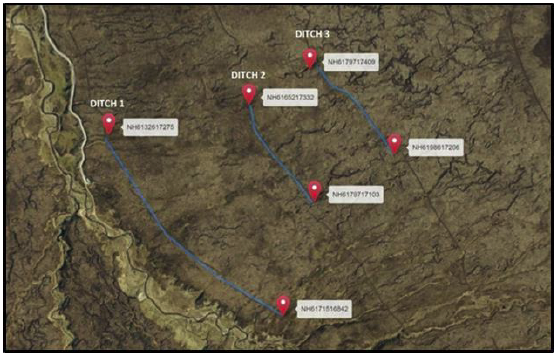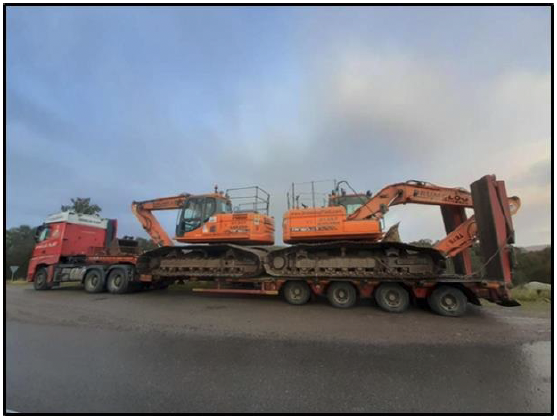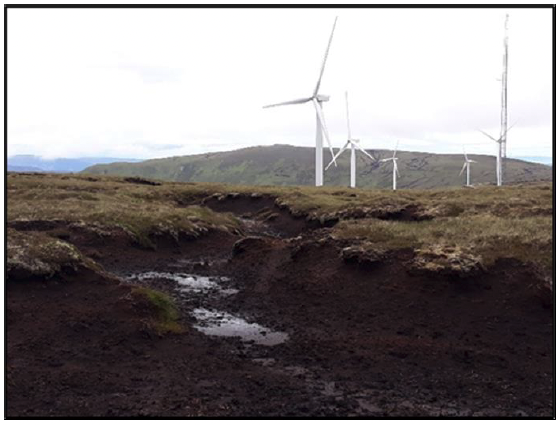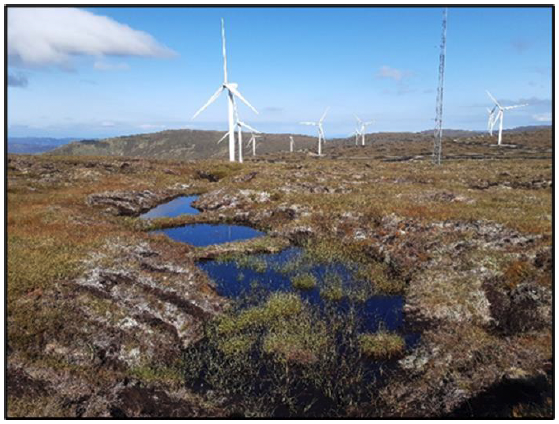Onshore wind: policy statement 2022
Sets out our ambition to deploy 20GW of onshore wind by 2030, as well as details on the formation of an onshore wind strategic leadership group, who will develop an onshore wind sector deal.
Annex 1: Best Practice Examples: Enhancing the Natural Environment
Habitat Management and Peatland Restoration – A Developer Experience – SSER
Scottish and Southern Energy Renewables (SSER) are working to tackle climate change and biodiversity decline in unison. They are developing and maintaining renewable energy assets whilst taking steps to build and maintain their sites in harmony with nature.
Over the last two decades, SSER have implemented Habitat Management Plan's (HMPs) on their wind sites, learning valuable lessons and refining HMPs to provide increased nature conservation benefits. These HMP's are carefully constructed by using the application Environmental Statement (ES) information to identify the key sensitive environmental receptors; focusing aims and objectives to ensure those receptors are maintained and enhanced. Monitoring is an integral part of their HMPs to inform baseline levels and measure success against.
This approach focusses on creating and enhancing habitats for species to thrive, with a commitment to halting biodiversity decline and seeing increased resources being used to create and restore valuable habitats such as peatlands. The benefits of restoring peatlands are multifaceted and can include benefits to biodiversity, carbon sequestration and water resources (quality and flooding).
To realise these benefits peatland habitats need to be healthy and in good condition. SSER routinely develop their wind sites in upland areas and are committed to realising the benefits from peatland restoration and contribute to national government restoration targets, to reverse the declining condition of Scotland's peatlands. At present, NatureScot (2020) estimate that 80% of Scotland's peatlands are in a degraded state. SSER's aim is to leave our sites in a better state than they were found.
Dunmaglass Wind Farm Peatland Restoration Case Study
Dunmaglass Wind Farm Limited is owned in a Joint Venture with Green UK Wind Plc and SSE. As part of the Planning Condition and Section 75 Agreement for the site, there is a Nature Conservation Management Plan (NCMP). One of the aims of the NCMP is to improve the overall quality of the blanket bog habitat within the Site.
This work began in 2017 with Drumclog Plant Ltd. blocking hill drains in NCMP Unit B (a control area away from the wind farm on the wider Dunmaglass estate). The blocking of these hill drains will hold more water on the hill thus improving the conditions for blanket bog habitat restoration by providing the suitable conditions for cotton grasses and peat forming sphagnum mosses to grow.

In October 2019, further work began to improve the quality of the habitat. This time through complex peat hag reprofiling and peat pan restoration within NCMP Unit A (the wind farm site). There were no conventional hill drains present to block but extensive areas of eroding peat has to be addressed.
To achieve high quality industry leading peatland restoration, SSER contracted Strath Caulaidh Ltd (SCL) to advise on the latest innovative restoration techniques. SCL are the specialist contractor being utilised by the estate and Monadhliath Deer Management Group (MDMG) to undertake peatland restoration funded by the NatureScot Peatland Action Fund on wider landscape scale restoration within the Monadhliath region. By utilising SCL, SSER ensured consistency of approach between the SSER and Peatland Action funded restoration.

In 2019, SSER employed 50 machine days, with two Low Ground Pressure (LGP) machines working on site simultaneously. A period of 40 days of peatland restoration were completed with approximately 20ha of peathag gullies reprofiled. The peatland restoration at Dunmaglass Wind Farm is an annual commitment, with 24ha of restoration completed in 2021 and roughly the same targeted in 2022.
Plates 3 and 4 show examples of an area before treatment and after treatment. Reprofiled peathags which have firstly been re-graded then covered with large 'carpets / blankets' of donor turves overlaid to prevent any further erosion. It can also be seen how small dams and bunds have been created in the gully to slow the flow of water and rewet the site, providing suitable habitat conditions for blanket bog vegetation to colonise and valuable foraging habitat for upland birds.


Contact
Email: OnshoreWindPolicy@gov.scot
There is a problem
Thanks for your feedback